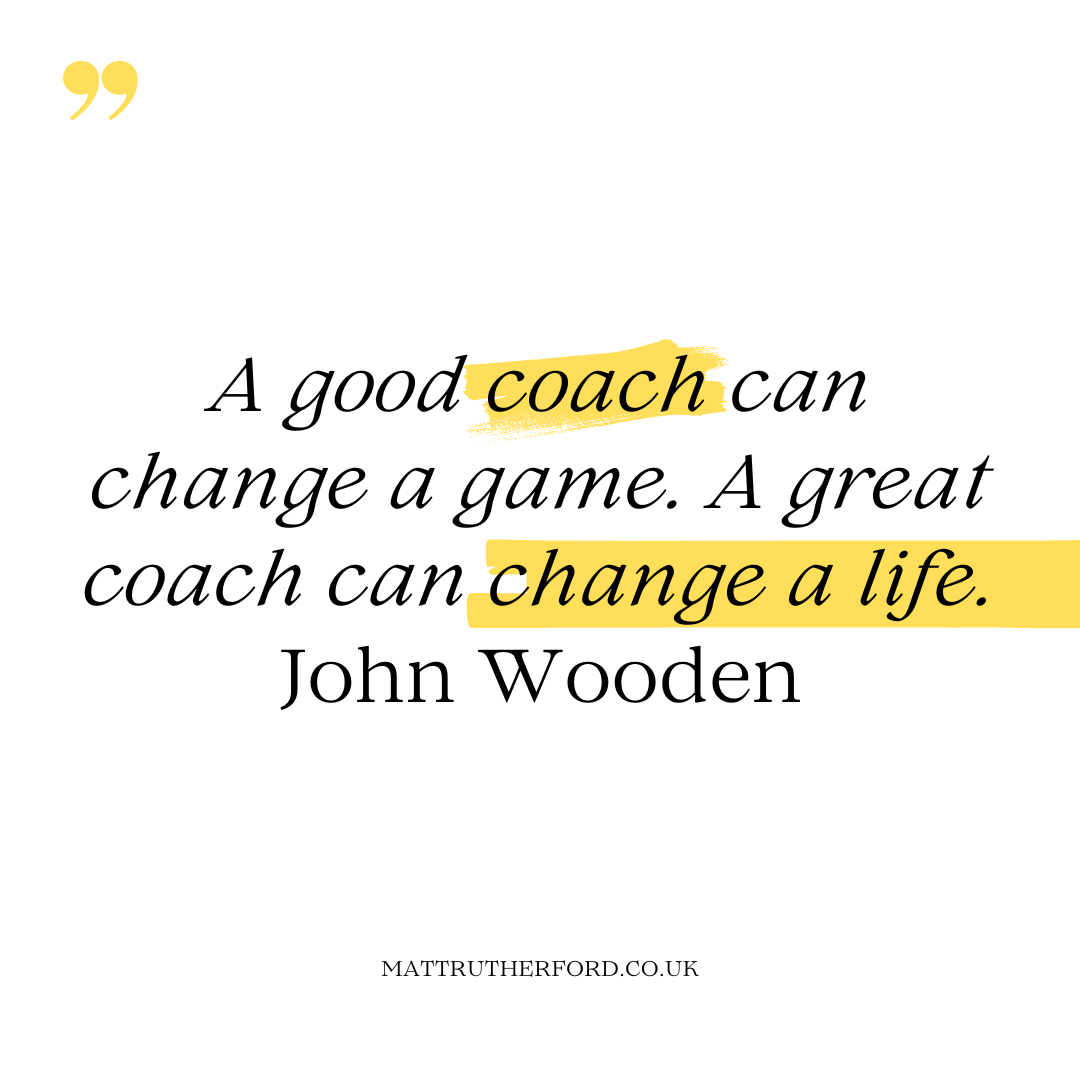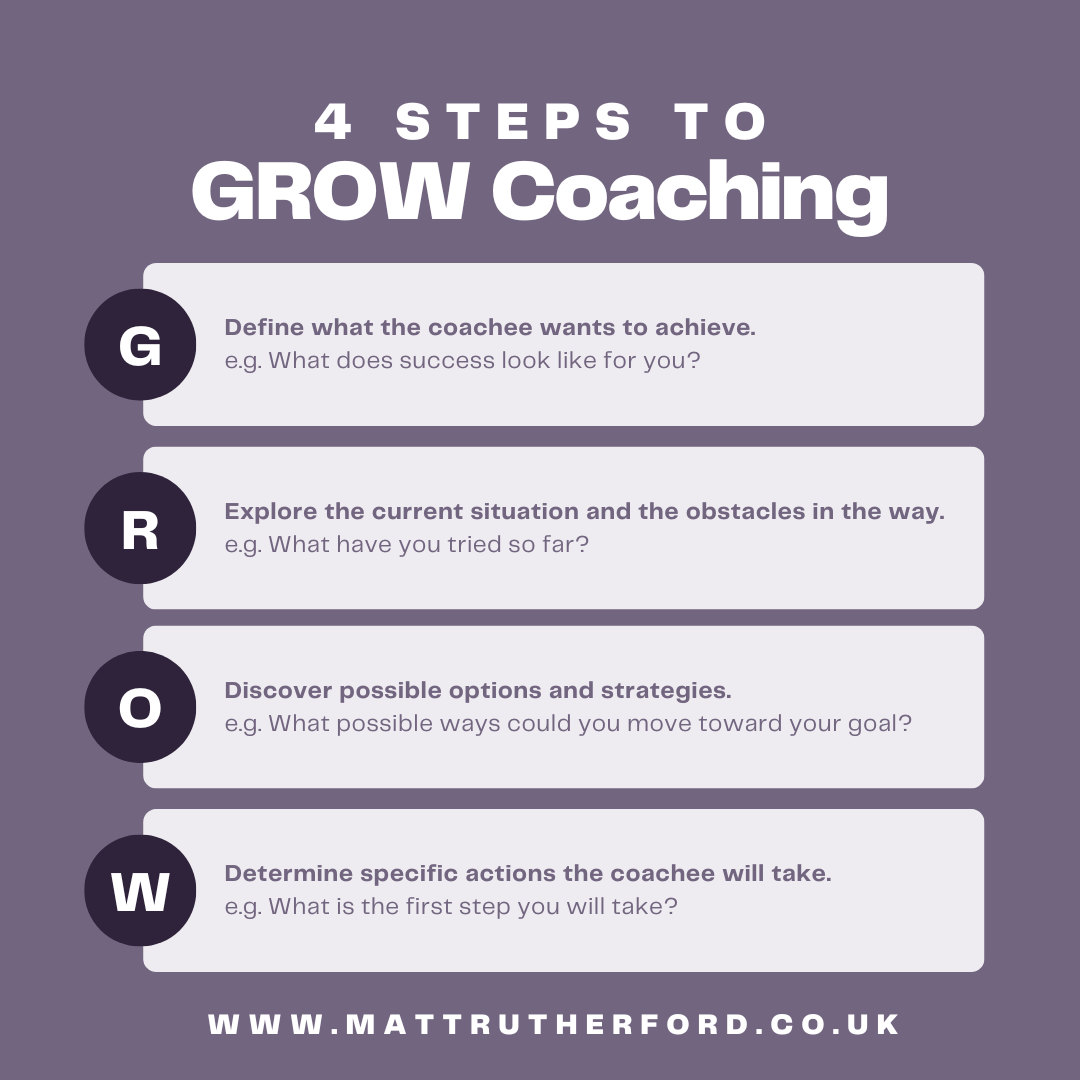Coaching Excellence: How to Use the GROW Model to Drive Performance

I attended a coaching refresher at work this week. It was a great reminder on the power of the GROW model and the benefits it can bring.
The ability to foster growth and development in others can be a powerful enabler. Effective coaching gives you the power to unlock potential and inspire progress.
Coaching is a process where an individual helps another person unlock their potential. The coach provides guidance, support, and feedback. They guide the coachee's self-discovery and personal growth.
The GROW coaching model is a framework that will help you guide others towards their goals. The beauty of the GROW model lies in its simplicity and effectiveness. It offers a step-by-step approach that can help guide coaching conversations.
If you're working with employees, clients, or friends the GROW model is a way to make progress.
In this blog post, I'll share the mechanics of the GROW model, and how to apply it. I'll also share a list of questions tailored for each stage of the framework.
By the end, you'll have the knowledge to help build your coaching practice. This will position you to drive performance, skills and success.
What is the GROW Coaching Model?
The GROW model was developed in the 1980s by business coaches Graham Alexander, Alan Fine, and Sir John Whitmore.
GROW stands for:
- Goal
- Reality
- Options
- Will
Each stage represents a step in the coaching conversation. First, helping individuals clarify their goals. Then understand their current situation and explore options. Finally, you can help them commit to taking action.

How Does the GROW Model Work?
Let's break down each stage of the GROW model and see how it guides a coaching session:
- Goal: Define what the coachee wants to achieve.
- Reality: Explore the current situation and the obstacles in the way.
- Options: Brainstorm possible strategies and solutions.
- Will: Determine the specific actions the coachee will take and their commitment level.
Applying the GROW Model at work
The GROW model can be integrated into workplace coaching. Here's how you can apply each stage with your colleagues:
- Goal: Start by helping your coachee set a clear and achievable goal. This could be related to their career, a project they're working on, or improving a specific skill.
- Reality: Encourage them to take assess their current situation. What's working well? What challenges are they facing? Understanding the reality helps to identify the gap between where they are and where they want to be.
- Options: Facilitate a brainstorming session to explore different ways to achieve the goal. Discuss various strategies, resources, and actions they can take. This stage is all about considering many options.
- Will: Finally, help them commit to a plan of action. What specific steps will they take? How will they stay accountable? Ensuring they have a clear action plan and a strong commitment is crucial for success.
Example Coaching Questions for Each Stage
To make your coaching sessions more effective, here are example questions you can use at each stage of the GROW model:
Goal
- What do you want to achieve in this session?
- What are your short-term and long-term goals?
- Why is this goal important to you?
- What would success look like for you?
- What specific outcomes are you aiming for?
- What is the time frame for achieving this goal?
- Who else needs to be involved or informed about this goal?
- What motivates you to pursue this goal?
- What could be the impact of not achieving this goal?
- How will achieving this goal benefit you or your team?
Reality
- Where are you now in relation to your goal?
- What progress have you made so far?
- What challenges are you currently facing?
- What resources do you have available to help you achieve your goal?
- How do you feel about your current situation?
- What is holding you back from progressing further?
- What have you tried so far to achieve your goal?
- How do your current skills and knowledge align with your goal?
- What feedback have you received about your progress?
- What patterns or trends do you notice in your current performance?
Options
- What are possible ways you could achieve your goal?
- What options have you not yet considered?
- What could you do differently to move closer to your goal?
- What are the pros and cons of each option?
- Who could support you in achieving your goal?
- What resources or tools do you need to explore your options?
- How could you overcome the obstacles you identified?
- What would be the most effective first step?
- What are some creative or unconventional approaches you could try?
- What past successes can you draw upon to inform your options?
Will
- What actions will you take to achieve your goal?
- When will you start taking these actions?
- What is the first step you need to take?
- How will you stay motivated and committed to your plan?
- What obstacles might you encounter, and how will you address them?
- How will you track your progress and stay accountable?
- Who can help you stay on track and provide support?
- How will you celebrate milestones and successes along the way?
- What will you do if you encounter setbacks?
- How will you ensure that your actions align with your overall goal?
Summary
By working through the GROW steps, you (and your coachee) can help find clarity, explore possibilities, and commit to actionable steps.
Whether you're a manager or a professional coach, incorporating the GROW model into your practice can unlock potential and drive success.
Remember, the key to effective coaching is asking the right questions and listening actively.
Use the example questions provided as a starting point, and adapt them to fit the unique needs of each coachee.
Further reading
There are lots of excellent resources for developing your coaching practice, here are a few that I recommend:







Member discussion